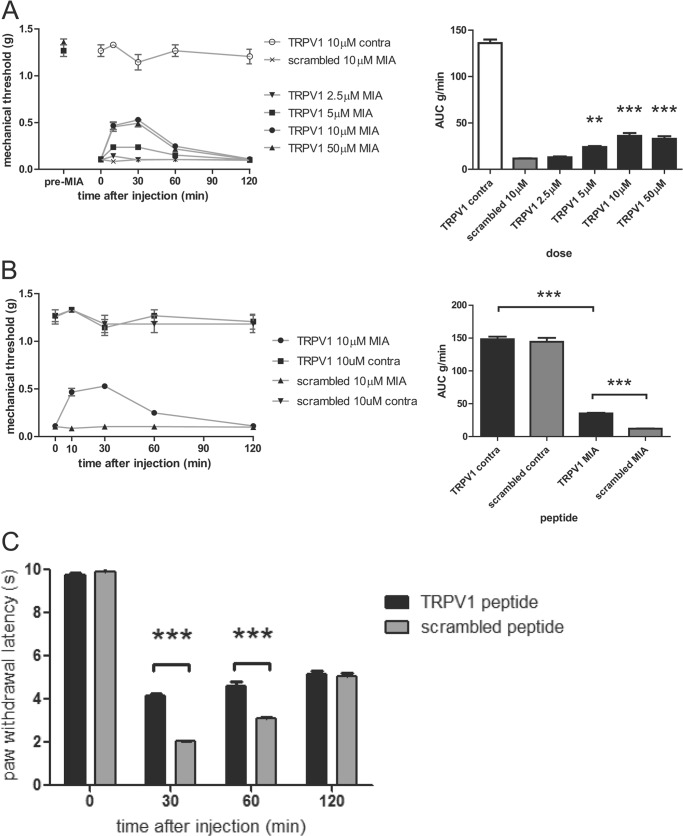FIGURE 6.
TRPV1 peptide ameliorates both mechanical and thermal hyperalgesia. A, intrathecal injection of TRPV1 peptide reduces mechanical pain threshold in MIA-induced osteoarthritic mice. Mice injected with MIA into the knee joint were treated with either TRPV1 or scrambled peptide. Left panel, dose-response curves for TRPV1 peptide showing mechanical withdrawal threshold in the ipsilateral MIA and contralateral side after TRPV1 or scrambled peptide injection. Right panel, bar graph representing the area under the curve (AUC) of the mechanical threshold data presented in the left panel. n = 6–8 per group. **, p < 0.05; ***, p < 0.01 compared with the MIA group injected with scrambled peptide, one-way ANOVA. B, intraplantar injection of TRPV1 peptide into the ipsilateral hind paw reduces mechanical pain threshold in MIA-induced osteoarthritic mice. Left panel, TRPV1 peptide increases mechanical withdrawal threshold as compared with scrambled peptide. Right panel, bar graph representing the area under the curve of the mechanical threshold data presented in the left panel. n = 6–8 per group. ***, p < 0.01 compared with the MIA group injected with scrambled or TRPV1 peptide, one-way ANOVA. C, TRPV1 peptide attenuates inflammatory thermal hyperalgesia. Mice that received intraplantar injections of 2% carrageenan along with 10 μm concentrations of either TRPV1 or scrambled peptide were tested at different time points for latency of paw withdrawal in response to radiant heat. n = 6–7 per group. ***. p < 0.01 using two-way ANOVA.

